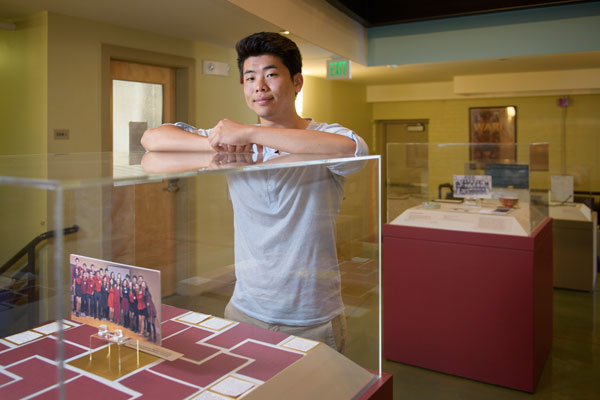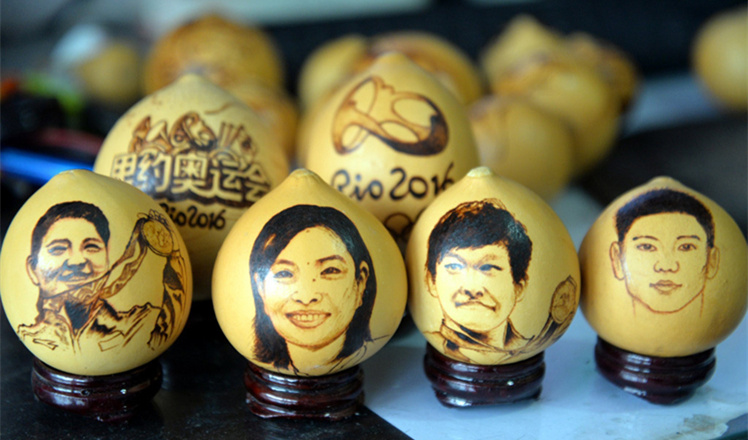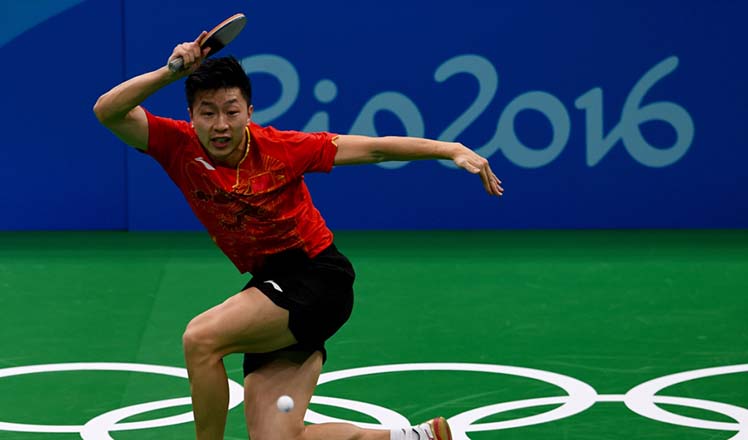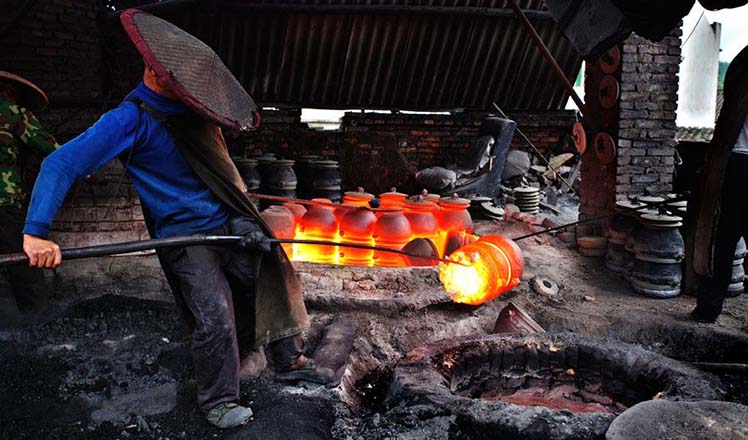Stanford exhibit put a spotlight on Chinese Americans
Updated: 2016-08-15 05:11
By AMY HE in New York(chinadaily.com.cn)
|
||||||||
 |
|
Bright Zhou, a recent grad at Stanford University, at the school's archaeology department's latest exhibit on Chinese Americans, called "Chinese American at Stanford: A Reflexive Archaeology". Provided to China Daily by Linda A. Cicero / Stanford News Service |
How important Chinese Americans were to the wealth of Stanford University, from the immigrant workers who built Leland Stanford's Central Pacific Railroad to those who worked on the Stanford family farm and later the university, is the focus of a new exhibition at the California school.
Bright Zhou, a recent graduate of Stanford, curated the exhibit, which opened in July and runs until May 2017.
Zhou said that he encountered the history of Chinese Americans at Stanford during one of his course. He also came across artifacts that were in the Stanford hospital that belonged to the Chinese who lived and worked in Stanford, California.
Zhou curated the objects alongside a collection of reflective pieces from Stanford's students about connections between past generations and today as part of a capstone project for his archaeology degree.
"A lot of the themes that I drew upon is that these artifacts are representative of picking new form and function in a new place. So that's not necessarily Chinese people coming into America, that's also any Stanford student coming into Stanford, need to find new identities, new communities," he said in an interview.
A majority of the workers at Stanford cooked, cleaned and worked on the campus, building roads and tending to gardens after completing the Pacific Railroad. Stanford himself hired Chinese workers for the campus.
The Chinese were in the immigration wave of the late 1800s as part of the California Gold Rush, and after it died down, many Chinese went to work in the railroad industry. The Chinese were major contributors to the building of the Transcontinental Railroad that linked the East and the West. The Chinese were filling a labor gap created by the lack of white workers.
Zhou said that the exhibit features a Chinese-American worker named Ah Wing, who served as a butler to the Stanfords and was a close confidante the couple. Ah Wing worked at a time when racial tension between white Americans and Chinese Americans was high. The Chinese were crucial to construction, but also were used as a way to incite fear of foreign laborers. Stanford himself employed fear-mongering tactics when running for office in California, despite having a large number of Chinese-Americans working on his farm and at his home.
Zhou, who also has a master's in biology and intends to go to medical school next year, said that he became interested in Asian-American activism once he started college, and saw the project as a culmination of that passion.
"This idea of reflective archaeology as an academic concept that speaks about how archaeologists acknowledge our own cultural biases. Something that I was noticing is that the historians of Chinese-American history, none of them were really Chinese. So for me, I wanted to be a Chinese American archaeologist studying my own people. That was my main impetus," said the 21-year-old student who grew up in Tennessee before moving to the East Bay in California.
The exhibit runs through May 2017.
amyhe@chinadailyusa.com
- Nepal's newly elected PM takes oath
- Texas gun law worries incoming students
- China vows to deepen economic, trade cooperation with ASEAN
- Fire guts Emirates jet after hard landing; 1 firefighter dies
- Egypt's Nobel-laureate scientist dies of illness in US
- THAAD muscle flexing unmasks anxiety over declining hegemony

 Top 10 tech billionaires worldwide
Top 10 tech billionaires worldwide
 Castro, 90, offers thanks on birthday, slams Obama
Castro, 90, offers thanks on birthday, slams Obama
 Romantic ending for Olympic diving lovebirds
Romantic ending for Olympic diving lovebirds
 Pyrographs of China's Rio Olympics champions on gourds
Pyrographs of China's Rio Olympics champions on gourds
 Bolt's hat-trick proves he is the king on track
Bolt's hat-trick proves he is the king on track Phelps writes new page with four wins in same event
Phelps writes new page with four wins in same event
 Ma Long wins Chinese derby to edge defending champion
Ma Long wins Chinese derby to edge defending champion
 Yingjing County's hand-crafted 'black pottery'
Yingjing County's hand-crafted 'black pottery'
Most Viewed
Editor's Picks

|

|

|

|

|

|
Today's Top News
Phelps puts spotlight on cupping
US launches airstrikes against IS targets in Libya's Sirte
Ministry slams US-Korean THAAD deployment
Two police officers shot at protest in Dallas
Abe's blame game reveals his policies failing to get results
Ending wildlife trafficking must be policy priority in Asia
Effects of supply-side reform take time to be seen
Chinese State Councilor Yang Jiechi to meet Kerry
US Weekly

|

|







